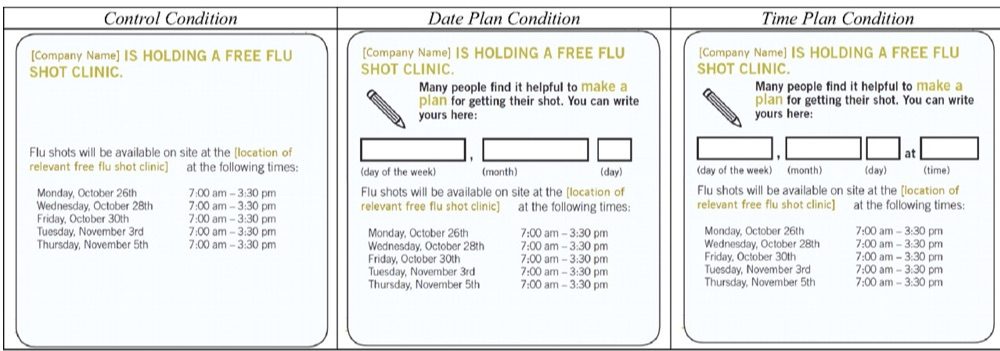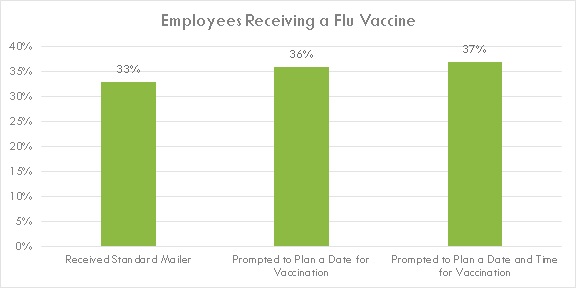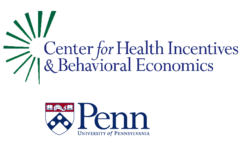
Postcards Increase Flu Shot Uptake
Organization : Center for Health Incentives and Behavioral Economics
Project Overview
Project Summary
Employees at a midwestern utility firm received reminders prompting them to plan the specific date and time they would get their flu shot.
Impact
Prompting people to specify the date and time they will get a flu shot increased their likelihood of receiving the vaccine by 4 percentage points, from 33.1% to 37.1%.
Cost
Minimal costs include printing and mailing postcards.
Source
Source
Challenge
Each year in the U.S., the flu leads to over 200,000 hospitalizations and 8,000 deaths. Despite the easy access and low cost, many people miss out on their yearly flu shot. While some individuals may choose not to get the vaccine, research has shown that many people who do want the shot fail to receive it because they procrastinate or forget entirely.
Design

Examples of the postcards sent to employees. Employees received one of the three pictured. The location dates and times of the influenza vaccination clinics were personalized in each mailer.
Employees at a large midwestern utility firm received one of the three mailings above, advertising free, on-site flu vaccine clinics. The standard (“Control Condition”) mailer simply listed the dates and times the clinic was open. The behaviorally informed mailers included planning prompts: a “date plan” encouraged employees to write down the date they would get their flu shot, and a “time plan” had employees specify the date as well as the time. Note employees were not actually required to fill in the date and times — the mailer simply provides a prompt to encourage them to make a plan.
Impact

A randomized evaluation found that writing both a date and time increased the number of employees getting their flu shots.
Employees who received the more detailed “time plan” mailer were 4 percentage points more likely than those who received the standard mailer to get their shot (37.1% compared to 33.1%). On the other hand, just planning the date did not result in a significant increase in flu shots.
The “time plan” mailer had the largest impact at sites where vaccines were only offered on a single day.
Implementation Guidelines
Inspired to implement this design in your own work? Here are some things to think about before you get started:
- Are the behavioral drivers to the problem you are trying to solve similar to the ones described in the challenge section of this project?
- Is it feasible to adapt the design to address your problem?
- Could there be structural barriers at play that might keep the design from having the desired effect?
- Finally, we encourage you to make sure you monitor, test and take steps to iterate on designs often when either adapting them to a new context or scaling up to make sure they’re effective.
Additionally, consider the following insights from the design’s researcher:
- Specific prompts (for example, to identify a date and time to visit the vaccine clinic) are more effective than general prompts (providing information about clinic hours, or having people only write a date to visit the clinic).
- The planning prompt should provide all the necessary information to successfully complete the action in one place.
- Planning prompts may have greater impact when they include particular opportunities that are only available for a limited time (e.g. flu vaccines only offered on one day).
- Planning prompts are easily appended to existing reminders and communications.
Note, that while the principles of behavioral science apply universally to all humans, small features in the context may make a design ineffective or unfeasible. As a result, we always recommend rigorously piloting and testing any solutions before scaling them.
Project Credits
Researchers:
Katherine Milkman Contact The Wharton School, University of Pennsylvania at University of Pennsylvania
John Beshears Graduate School of Business, Stanford University
James Choi School of Management, Yale University
David Laibson Harvard Kennedy School
Brigitte Madrian Harvard Kennedy School


